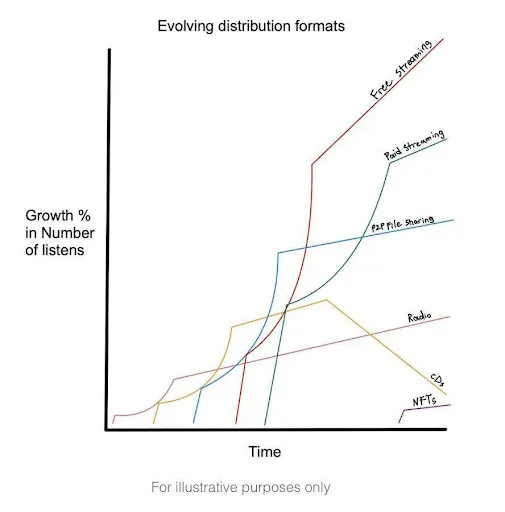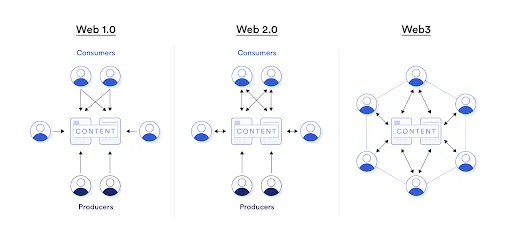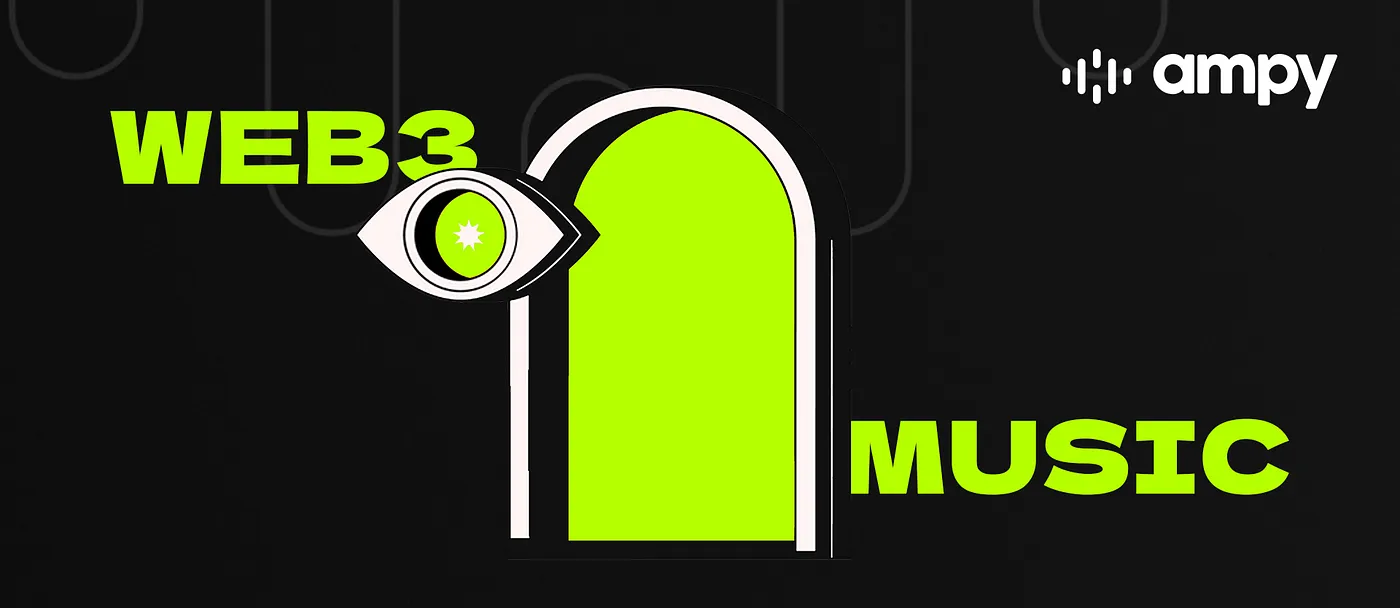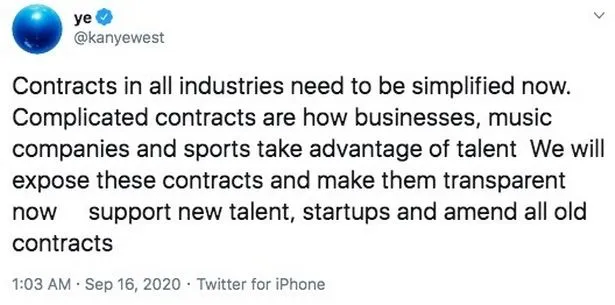The music industry is constantly evolving with new formats and innovations.
The shift from CDs to MP3 players, to streaming, and more recently in album formats from the classic 16-track to sometimes shorter EPs or 30–40 track playlists are just a few of the innovations that changed the music landscape forever.

One of the most discussed recent innovations in this sector (and not only) is the so-called Web3. To define Web3 more concretely, it’s a term defining a new Web model.
First came Web1, which was “read-only” and consisted mainly of blogs, where users could not interact except by reading. Web2 (the current one) would be one of reading but also of writing, where anyone can post a tweet, an Instagram post, or a YouTube video. Web2 is far more centralized than Web1, with megastructures like Google, Amazon, or Spotify.
Finally, Web3 is based on Web2, but with the addition of a notion of ownership: you own your data (and your music).

It’s a very (too much ?) trendy term, and it encompasses a lot of trends.
In this article, we will see some innovations enabled by Web3 and how they are impacting the music industry.

To support small artists, platforms like Sound.xyz have arisen, allowing you to organize listening sessions and collect the sounds you like. This is an interesting solution, as it allows niche artists to generate revenue where they are usually turned away by streaming platforms — while giving their fans the opportunity to own a sound from their favorite artist — some kind of ultra-rare vinyl. Sometimes this NFT provides access to the artist’s private fan club, allowing them to preview new sounds or get exclusive information.
A variation of this system is to give access to the royalties of a sound: an artist releases an album — allows fans to collect sounds — and gets access to the revenues generated by that album. The artist gets instant income without having to wait for Spotify and royalties for a few months, while the fans gain access to a long-term source of income and can bet on the success of their favorite artist.
This is the model of a platform like Royal, founded by 3LAU and which has organized drops for the rapper Nas for example.
Finally, an artist can submit a song as a single copy to a platform such as Catalog and obtain the rights to that music, allowing them to use it in a video or monetize it afterward according to the contract set by the NFT.
This licensing system was used, for example, by omgkirby, who published LoFi music and gave the full rights of use to the buyers of the NFT.
The DAO concept, unique to Web3, also allows for innovation and the creation of labels in a completely new way. In fact, a DAO is both an autonomous and decentralized organization, generally focused on a domain or a vertical.
One can imagine DAOs that search for new artists, DAOs that develop “electro artists” or DAOs that focus on the use of music in advertising. Traditional players such as Warner and Snoop Dogg have already launched their Web3 labels. The idea is that labels can be split into multiple sub-organizations. They can raise money publicly and invest directly in artists via the blockchain.
Think of it as a kind of crowdsourcing for artists, who would be funded directly by their fans, through much simpler and less opaque contracts than traditional labels. In fact, it’s one of the biggest problems in music today. The one that makes Kanye West or Taylor Swift cringe.

Even if Web3 doesn’t magically solve this problem, the immutability, and simplicity of the contracts make the process simpler and, above all, accessible to everyone.
A great part of the musician’s income comes from touring and concerts they can arrange. This source of income disappeared during the COVID era. Fortunately, Metaverses have become alternatives to continue interacting with the public and creating new consumer experiences. One of the most famous experiences was the collaboration between Travis Scott and Fortnite, but we can also mention Snoop Dogg’s concert on Decentraland.
Making a concert accessible to everyone, regardless of location, is the essence of these shows. Digital technology also makes it possible to create much more complete experiences, with visual effects and new interactions.

Some platforms allow for investing in fan tokens, a kind of shares representing the performances of an artist: the idea is to allow fans to bet on the success of their artist and also to create a fan club behind the artist, a concept that is often lacking in traditional music and that we can see appearing more and more with the creation of artist’s Discord, for example.
Finally, one of the most interesting uses of the blockchain for music, in our opinion, is the concept of stems and remixes. Music has always liked to use and reuse, whether it be inspirations, sampled instrumentals, or references. Unfortunately, most music rights are held by the three major labels, Sony, Warner and Universal. The idea behind Stems is to make it possible for everyone to create their own remixes — and to leave no one out when it comes to copyright allocation.
In a label setup, this would be impossible, but with the blockchain, one can imagine an artist releasing a sound that would be remixed, then remixed — and remixed again. And each artist would get a fixed percentage of each sound, depending on their contribution, and this would be immutable.
At Ampy, we believe that music should be accessible to everyone, and the products we create are free and intended to create new experiences for the public.
To find out more, follow us on Twitter and sign up on our waiting list for artists on our Website.